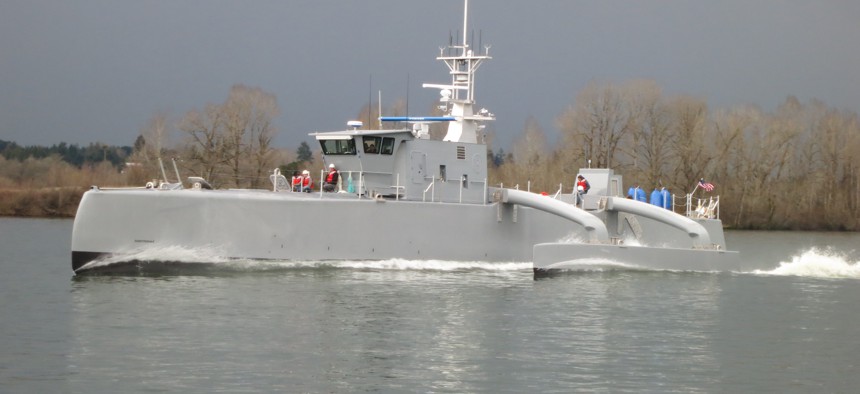Navy wants drones to help drones
The Office of Naval Research is looking for other unmanned platforms to provide data transfers and refuel unmanned surface vehicles at sea.
While drone-on-drone fights are still thought of in the future tense (which isn’t to say forces aren’t preparing for them) drone-to-drone cooperation is here now – in the form of swarming, for instance.
With the Navy developing unmanned vehicles – in the air, on the surface and below the ocean – these systems, designed to operate far away from human operators, will need fuel and data updates. The Office of Naval Research has proposed a potential solution – let other drones take care of it. After all, one of the draws of unmanned technologies are their endurance capabilities. Diverting manpower and manned assets to perform these services or forcing unmanned platforms to cut mission time to refuel, to some degree, diminishes the role that long endurance plays.
Specifically, ONR’s effort is aimed at aiding Fleet-class unmanned surface vehicles – vessels approximately 38.5 feet in length with full-load displacement of 21,400 pounds that tow mine-countermeasure sweep gear, support anti-submarine warfare, surface warfare and/or electronic warfare missions. The Navy is developing various unmanned surface vehicles (USVs) that are launched and recovered from host ships, but also a remote fueling and data transfer system more proximate to the USV than the host ship to increase endurance mission time, as opposed to having the USV return the host ship for these tasks.
ONR, in its solicitation, envisions the fuel source platform as another USV or a barge, a small vessel, a bladder or something else entirely. The refueling sequence between the two vehicles should be automated, ONR said, only requiring the human supervision of a remote operator. To save time, individual USV refueling and data transfers should be done simultaneously.
Offerors will design, build, test and demonstrate a prototype of the Offboard Refueling and Data Transfer System (ORADTS) with requisite hardware and software, although ONR noted that development of new technology for data transfer is outside the scope of its notice. Offerors must leverage existing technologies.
The metric for at-sea testing would be ORADTS’s ability to refuel 650 gallons of fuel – the Fleet class USV can carry 400 and 650 gallons of diesel fuel, using fuel at a rate between 25 and 40 gallons per hour – and transfer 2 terabytes of data without errors with a 45 minute threshold and an objective time of 30 minutes.
In a perfect world, the fuel source platform will be based on an inexpensive, readily available maritime vessel either already in the Navy’s inventory or available commercially.
Responses are due by Sept. 20, 2016.




